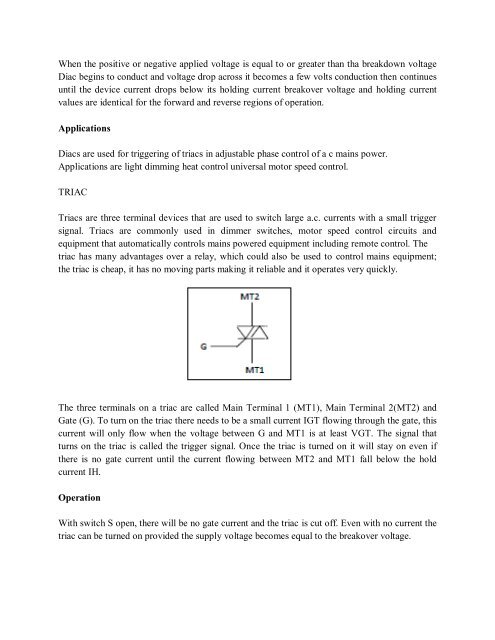EC6201_uw
Create successful ePaper yourself
Turn your PDF publications into a flip-book with our unique Google optimized e-Paper software.
When the positive or negative applied voltage is equal to or greater than tha breakdown voltage<br />
Diac begins to conduct and voltage drop across it becomes a few volts conduction then continues<br />
until the device current drops below its holding current breakover voltage and holding current<br />
values are identical for the forward and reverse regions of operation.<br />
Applications<br />
Diacs are used for triggering of triacs in adjustable phase control of a c mains power.<br />
Applications are light dimming heat control universal motor speed control.<br />
TRIAC<br />
Triacs are three terminal devices that are used to switch large a.c. currents with a small trigger<br />
signal. Triacs are commonly used in dimmer switches, motor speed control circuits and<br />
equipment that automatically controls mains powered equipment including remote control. The<br />
triac has many advantages over a relay, which could also be used to control mains equipment;<br />
the triac is cheap, it has no moving parts making it reliable and it operates very quickly.<br />
The three terminals on a triac are called Main Terminal 1 (MT1), Main Terminal 2(MT2) and<br />
Gate (G). To turn on the triac there needs to be a small current IGT flowing through the gate, this<br />
current will only flow when the voltage between G and MT1 is at least VGT. The signal that<br />
turns on the triac is called the trigger signal. Once the triac is turned on it will stay on even if<br />
there is no gate current until the current flowing between MT2 and MT1 fall below the hold<br />
current IH.<br />
Operation<br />
With switch S open, there will be no gate current and the triac is cut off. Even with no current the<br />
triac can be turned on provided the supply voltage becomes equal to the breakover voltage.


